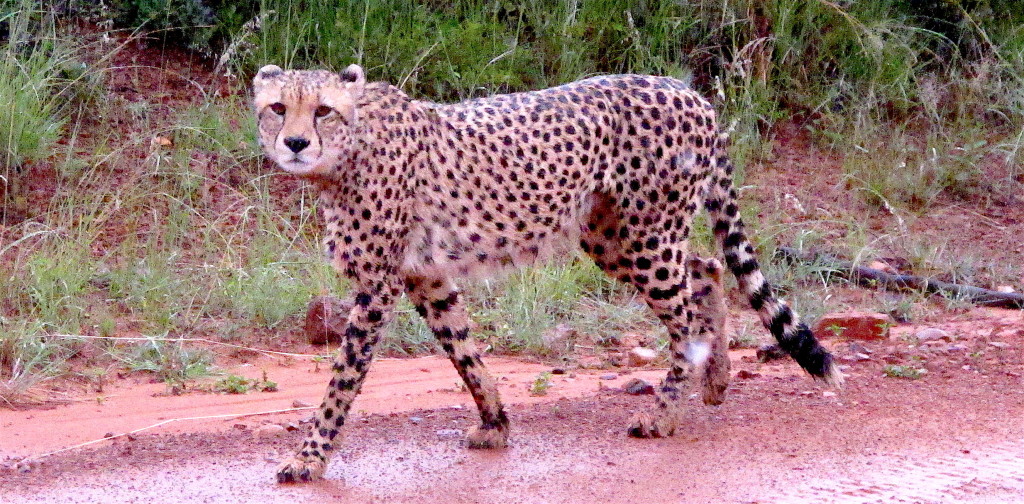Murphy’s law. Sometimes – no matter how much goodwill may have been invested into planning – things just don’t work out the way they should. Take a wildlife safari, for instance and imagine this scenario: At the ungodly hour of four-thirty in the morning, when it is still pitch dark outside, one’s proper physical system has not gained momentum yet, the game reserve is 90 minutes away from the hotel, vision is limited, the vehicle’s irritated GPS fabricates unfathomable directions once the smoothly paved stretch ends and we turn off-road. Rain is pouring (pouring!). Aboard a forlorn minibus a bunch of drowsy journalists are resting their exhausted frames against foggy window panes and limply jump out of their seats involuntarily each time the bus rattles into a pothole with a thud. Or conquers another especially mean hump. And another.
Posts about Preservation
Wet, wet, wet: The Museo Subacuático de Arte in Mexico
Most of the time, satisfying one’s cultural hunger can easily be accomplished by simply walking into a museum. Theoretically. Yet, the Museo Subacuático de Arte, located in different sites on the map of Mexico, demands a little more effort than that – but surely does offer an additional thrill: its life-size exhibits are mounted to the seabed and thus best inspected in the sporty scuba-diving or snorkeling mode. Accelerated heartbeat assured. Those who would rather keep their noses above sea-level are invited to explore the arcane population of underwater sculptures conveniently aboard a glass-bottomed boat, with or without a preceding jungle tour.
TED Talk. Paul Greenberg: The four fish we are overeating
“Grinding Nemo”
Overfishing is only half of the story, says Paul Greenberg in his talk. The other half is about the boom in fish farming and aquaculture, which – over the past few years – has started to exceed the amount of wild fish produced. In America and a great part of the Western World, shrimp is by far the most consumed seafood. 5, 10, 15 pounds of wild fish – deemed trash fish by the fishing industry – are killed to bring one pound of shrimp to the market. Filmmaker Mark Benjamin called the phenomenon “Grinding Nemo“: Shrimp dredgers vacuum up a huge amount of by-catch that is then minced and turned into shrimp feed. An „ecosystem literally eating itself and spitting out shrimp“. A recent study has found that dredging for shrimp represents one of the most carbon-intensive ways of fishing there is.
Prague: Obecní dům – a Genius Loci of fine Art Nouveau
Great sculptors and painters of their time have created an architectural treasure, whose masterly opulence bears witness to their genius to this day. Jan Preisler, Mikoláš Aleš, Max Švabinský, František Ženíšek, Ladislav Šaloun, Josef Mařatka, Josef Václav Myslbek or Alfons Mucha – names difficult to pronounce – were but a small fraction within the remarkable group of skillful artists involved in building and decorating Obecní dům – the Municipal House located right in the heart of Prague. Since its inauguration in January of 1912, the extraordinary building has served as a splendid stage for atmospheric concerts, grand festive balls as well as fancy fashion shows and is justly listed a national heritage site. Its protagonists – the Smetana Hall and the Municipal House Restaurant – alone may well be worth the trip to Prague, from whichever corner of the globe it may have to commence.
Galápagos: Rare Fauna and a Leading Green Hotel
They may not appear overly enthusiastic when it comes to appreciating what’s going on around them on their native Galápagos islands, whose name-givers they are: the weighty Giant Tortoises – eye-lids on half-mast – remain in the know by sheer age. With some of them having been around for nearly one-and-a-half centuries, they have posed as reliable long-term witnesses of the wondrous proceedings happening on the remote archipelago in the Pacific Ocean. 1,000 kilometers west off the South American coast and under the sovereignty of Ecuador, the islands are teeming with rare fauna ranging from cute to ugly to downright strange: the pre-historic looking Iguana’s serrated crest lends him a ferocious dragon-like air; the male Frigatebird makes a mighty fuss during the mating season, when he stages his macho parade in front of adored females and fortifies his efforts by inflating his Ferrari-red gular sac until it stresses at the seams; the Blue-footed Booby wraps its courtship into a wobbly dance performance. By awkwardly swaying from foot to foot Chaplin-style, he offers amused onlookers an endearing sight and has become the star of many a nature video. Preserving the archipelagos of Galápagos is a primary goal locally. One of the precursors in achieving it, is the Finch Bay Eco Hotel on the isle of Santa Cruz.





